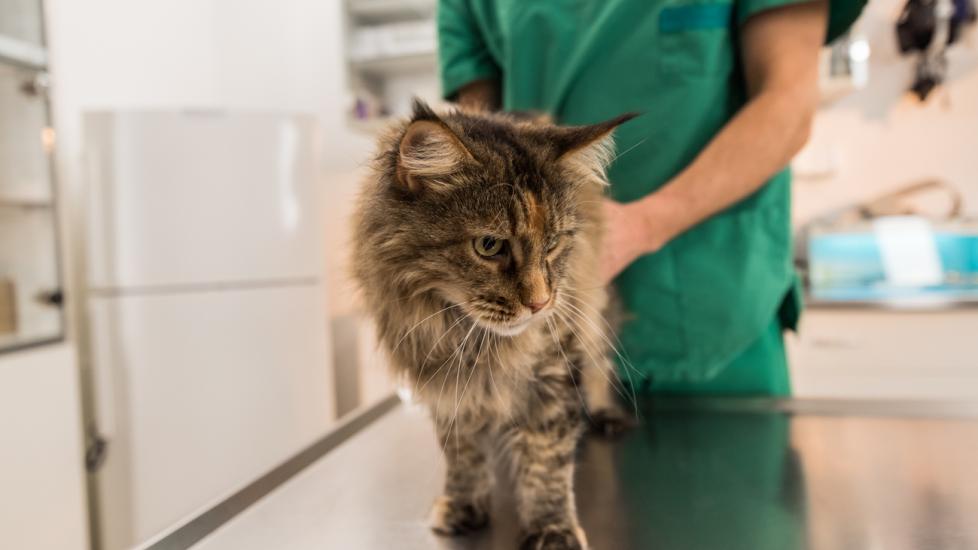Vaginitis (Vaginal Inflammation) in Cats
What Is Vaginitis in Cats?
Vaginitis is inflammation (swelling) and often an infection of the vagina and vulva in females. Though the condition is commonly seen in dogs, it can also occur in cats. Vaginitis can be very uncomfortable for your cat, often causing pain during urination. Left untreated, these infections can also spread to the bladder, kidneys, or even the uterus if your cat isn’t spayed.
Schedule an appointment with your veterinarian as soon as possible if you notice any swelling or inflammation in the vaginal area.
Symptoms of Vaginitis in Cats
As with all illnesses in cats, vaginitis can be difficult to diagnose at home. Some common symptoms include:
-
Scooting or rubbing the back end on floors or other surfaces
-
Excessive grooming under the tail/around the vulva
-
Urinating frequently, usually smaller amounts
-
Urinating in inappropriate locations
-
Discharge from the vulva
-
Redness and swelling under the tail
Causes of Vaginitis in Cats
The most common cause of vaginitis in cats is a decrease in proper grooming, which can lead to the collection of feces or even urine in the fur around the vulva. This is most apparent in obese cats who cannot bend to groom their back ends and often have extra folds of skin around the rectum and vagina that trap material. Cats with severe arthritis may also be unable to groom properly and be more susceptible.
Less common causes of vaginitis are:
-
Trauma to the vulva or anal area
-
Allergic disease
-
Urinary tract infections
-
Tumors of the vagina or anal area
Unlike in humans, fungal infections of the vagina (like a yeast infection) in cats are extremely rare.
How Veterinarians Diagnose Vaginitis in Cats
Vaginitis is most often diagnosed by visual inspection of your cat’s vulva combined with clinical signs. The harder part for your veterinarian is figuring out the cause. The following diagnostics may be recommended to find the root of the problem:
-
Urinalysis or urine culture to check for infection or other abnormalities of the urinary tract
-
Blood chemistry and complete blood count to look for kidney disease or other organ dysfunction
-
X-rays or ultrasound to look for physical abnormalities like bladder stones
-
Skin culture of the vagina or vulva (particularly in cases that don’t respond well to therapy)
-
Biopsy in severe cases or when tumors are suspected
Treatment of Vaginitis in Cats
Because there are many possible causes of vaginitis, treatment will vary depending on the underlying cause. Hospitalization is rarely necessary. Systemic (full-body) antibiotics are often needed for bacterial infections of the vagina or bladder. In some cases, steroids or pain medications may be used to decrease the inflammation.
As cats tend to lick at regions that are uncomfortable, an e-collar or cone should be used to allow the vaginitis to heal without disruption. It is important to avoid over-the-counter treatments for human vaginitis, because this disease is different in cats and these treatments may be toxic. Your veterinarian can prescribe you appropriate products to help keep the area clean while your cat cannot groom.
Recovery and Management of Vaginitis in Cats
Superficial surface inflammation usually responds to medication within 1-2 weeks. Deeper infections may take a month or so to resolve. Follow-up exams with your veterinarian will be important, because your cat’s behavior may improve before the underlying inflammation is resolved. If treatment is stopped before the inflammation is under control, the vaginitis may recur.
Once treated, the likelihood of recurrence depends on the cause of the vaginitis. Uncomplicated cases, such as trauma that can be surgically repaired or vaginitis from matted fur (if it can be easily removed), are very unlikely to recur. When the underlying disease is complex or requires lengthy treatment, your cat may have more episodes before things are fully managed. Obesity, arthritis, and allergies are manageable, but they take time to treat. It may even take more than one course of treatment to figure out the underlying cause.
Featured Image: iStock.com/Tashi-Delek
